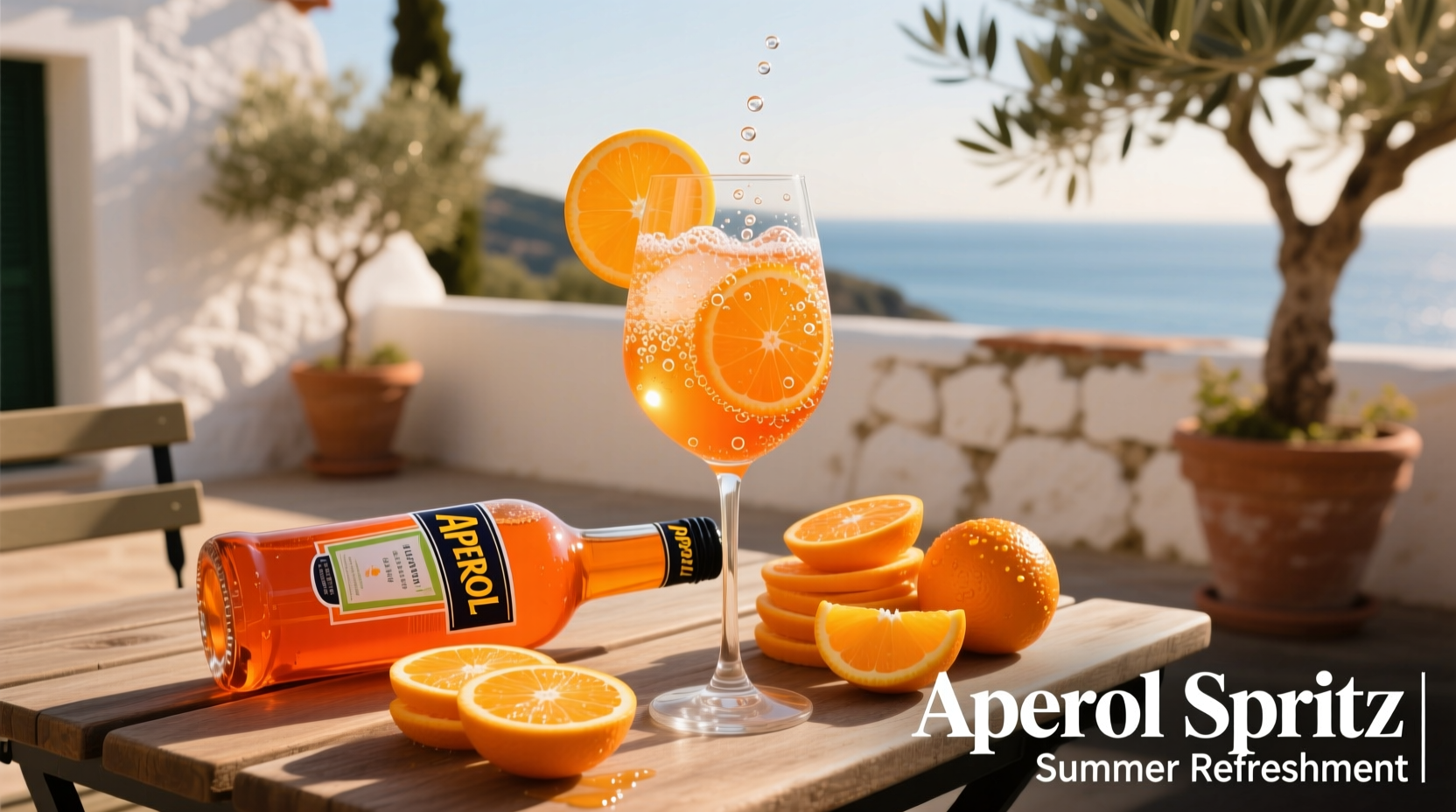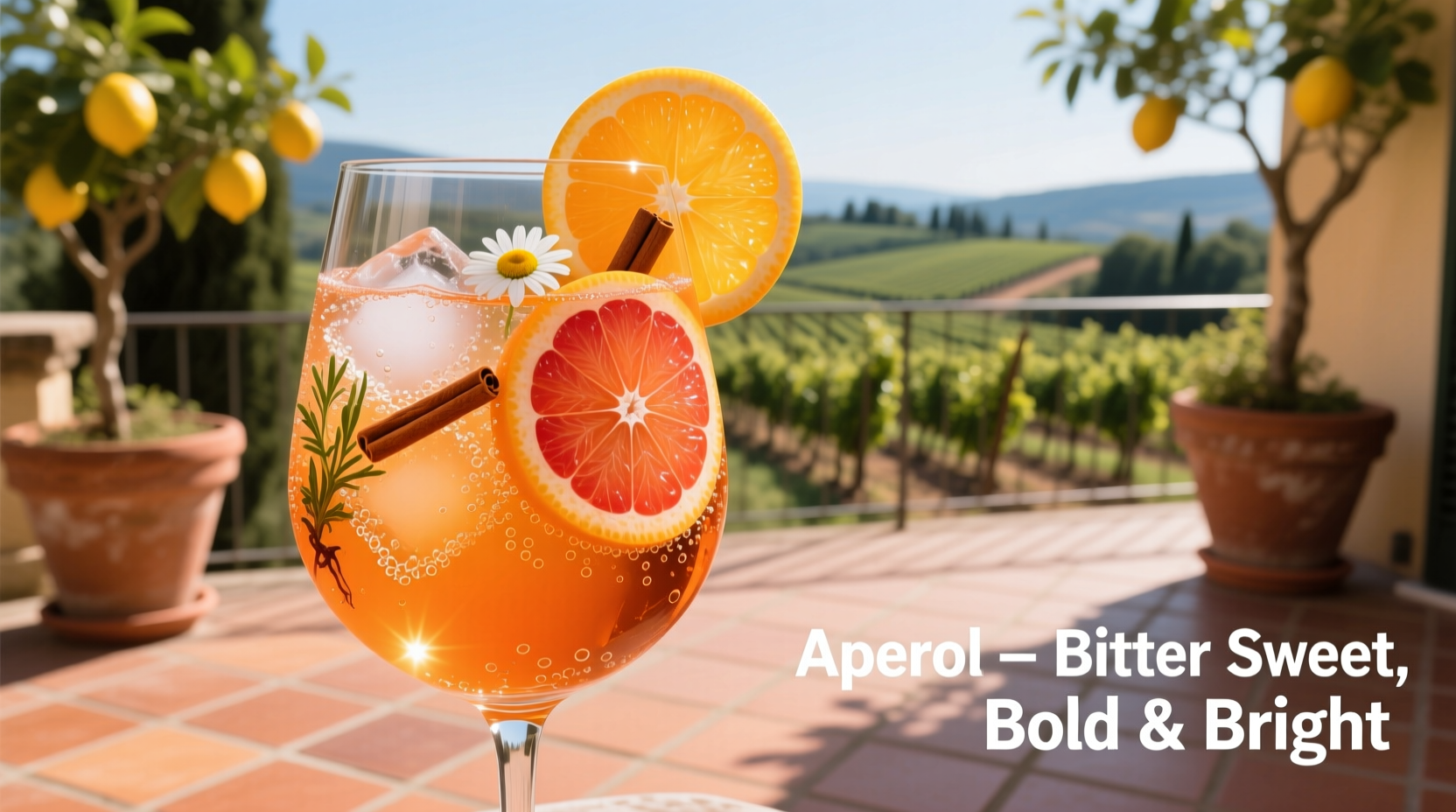Curious about that sunset-colored Italian aperitif you've seen in trendy bars? You're not alone. Understanding what does aperol taste like is essential whether you're considering your first Aperol Spritz or looking to expand your cocktail knowledge. This guide delivers a precise flavor breakdown from a professional perspective—no guesswork, just clear sensory details you can trust.
The Core Flavor Experience
When you take your first sip of Aperol, you'll immediately notice its distinctive citrus-forward profile dominated by bitter orange peel. Unlike sweet orange liqueurs, Aperol delivers a sophisticated balance where the bitterness is tempered by subtle sweetness from neutral spirits and natural caramel. The 11% alcohol content ensures the flavor remains smooth without harsh alcoholic burn.
Professional tasters describe Aperol's flavor journey as having three distinct phases:
- Initial impression: Bright orange zest with hints of tangerine
- Middle palate: Gentle bitterness from gentian root and rhubarb
- Finish: Light herbal notes with a touch of vanilla and a clean, refreshing aftertaste
What Creates Aperol's Signature Taste?
Aperol's unique flavor comes from its carefully balanced blend of natural ingredients. According to official production information from Campari Group (Aperol's manufacturer), the liqueur contains:
- Bitter and sweet orange peels
- Gentian root (providing earthy bitterness)
- Rhubarb (adding subtle tartness)
- Cinchona (for herbal complexity)
- Natural caramel (for color and mild sweetness)
Unlike its more intense cousin Campari, Aperol uses a lower concentration of bittering agents, resulting in a more approachable profile that appeals to those who typically avoid bitter liqueurs. The exact recipe remains a closely guarded secret, but industry experts confirm these core components through sensory analysis.
| Flavor Component | Primary Source | Contribution to Taste |
|---|---|---|
| Citrus | Bitter orange peel | Bright, zesty opening notes |
| Bitterness | Gentian root, rhubarb | Subtle earthy bitterness without harshness |
| Sweetness | Natural caramel, neutral spirits | Light sweetness balancing the bitterness |
| Herbal notes | Cinchona, other botanicals | Complex background complexity |
Aperol vs Campari: Understanding the Taste Difference
Many people confuse Aperol with Campari, but their flavor profiles differ significantly. This comparison helps clarify what does aperol taste like in relation to its more famous cousin:
| Characteristic | Aperol | Campari |
|---|---|---|
| Alcohol content | 11% ABV | 20.5-28.5% ABV |
| Sweetness level | Moderate (110g sugar/L) | Low (100g sugar/L) |
| Bitterness intensity | Mild to moderate | Pronounced |
| Color | Bright orange | Deep red |
| Primary flavor notes | Orange, light herbs, subtle bitterness | Rhubarb, berries, pronounced bitterness |
This flavor difference explains why Aperol has become the preferred choice for approachable aperitifs, particularly in the popular Aperol Spritz cocktail. Its lower bitterness and alcohol content make it more accessible to those new to bitter liqueurs.

How Serving Temperature Affects Aperol's Taste
Temperature dramatically impacts what does aperol taste like in your glass. Professional bartenders emphasize that serving temperature isn't just about refreshment—it fundamentally changes the flavor experience:
- Chilled (3-5°C/37-41°F): Citrus notes become more pronounced while bitterness recedes, creating a more refreshing experience ideal for summer
- Room temperature: Herbal and bitter notes become more prominent, revealing greater complexity but potentially overwhelming new drinkers
- With ice: Gradual dilution as ice melts creates an evolving flavor profile, starting bright and citrusy then developing more herbal complexity
For those exploring aperol flavor profile for the first time, starting with a chilled serving is recommended to experience its most approachable characteristics.
Perfect Pairings: Cocktails That Showcase Aperol's Flavor
Certain cocktail combinations highlight different aspects of Aperol's taste profile. Understanding these pairings helps you appreciate what flavors are in aperol more fully:
- Aperol Spritz (Aperol, Prosecco, soda water): The classic preparation where Prosecco's fruitiness complements Aperol's citrus notes while soda water softens the bitterness
- Negroni variation (Aperol, gin, sweet vermouth): Creates a more approachable Negroni where Aperol's sweetness balances gin's botanicals
- Aperol Sour (Aperol, lemon juice, egg white): Highlights the citrus elements while the egg white mutes bitterness
- Simple serve (Aperol over ice with orange slice): Purest way to experience aperol taste description without other flavors interfering
Storage Tips to Maintain Flavor Quality
Unlike wine, liqueurs don't improve with age once opened. To preserve Aperol's distinctive aperol taste description characteristics:
- Store in a cool, dark place away from direct sunlight
- Keep tightly sealed when not in use
- Consume within 6-12 months after opening for optimal flavor
- Refrigeration isn't necessary but can extend freshness
Noticeable flavor degradation occurs when Aperol loses its vibrant color or develops a flat, one-dimensional taste—signs it's past its prime.
Who Typically Enjoys Aperol's Flavor Profile?
Consumer research from the International Wine and Spirits Record shows that Aperol appeals particularly to:
- Those who enjoy citrus-forward beverages but find Campari too bitter
- Wine drinkers transitioning to spirits-based cocktails
- People who prefer lower-alcohol beverages (11% ABV vs typical 40% spirits)
- Cocktail enthusiasts seeking refreshing, sessionable drinks
If you enjoy flavors like blood orange, light herbal teas, or mildly bitter citrus fruits, you'll likely appreciate Aperol's balanced profile.











 浙公网安备
33010002000092号
浙公网安备
33010002000092号 浙B2-20120091-4
浙B2-20120091-4